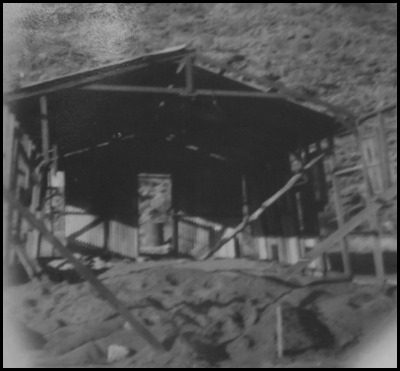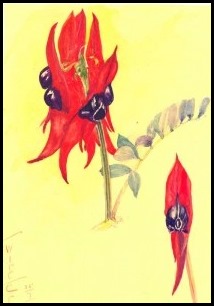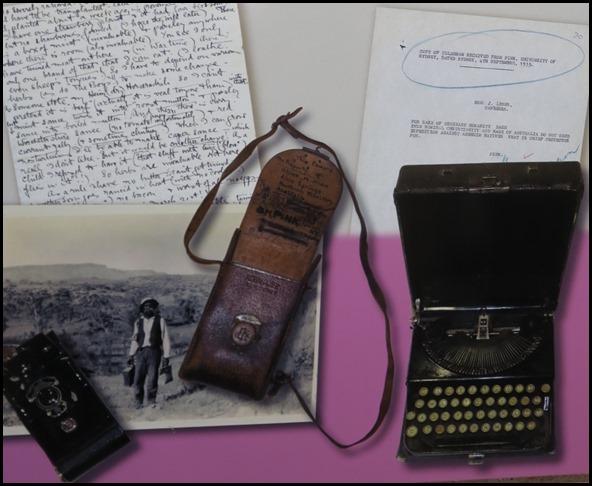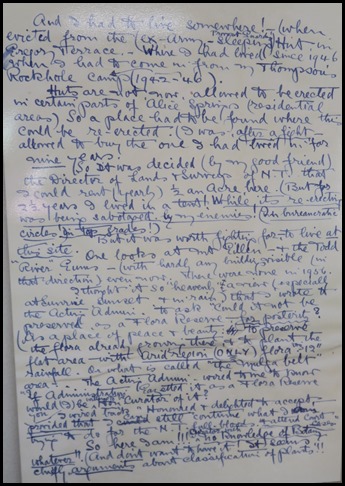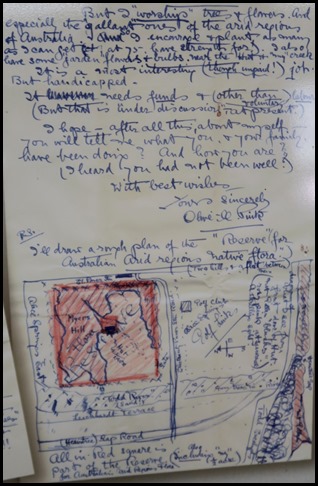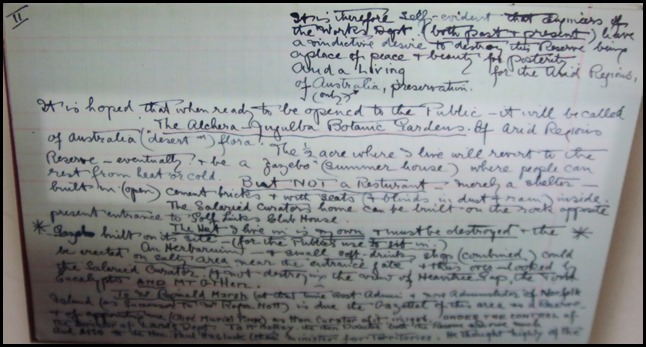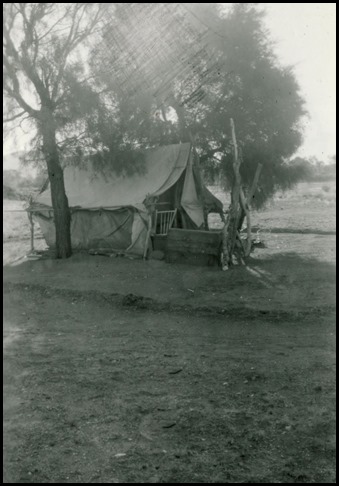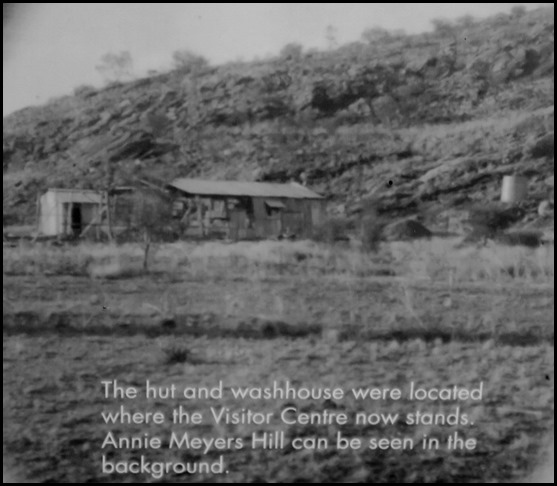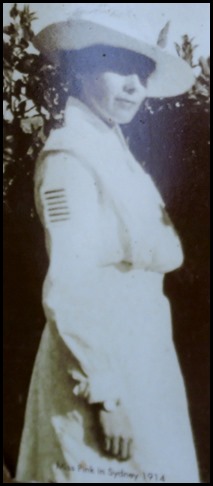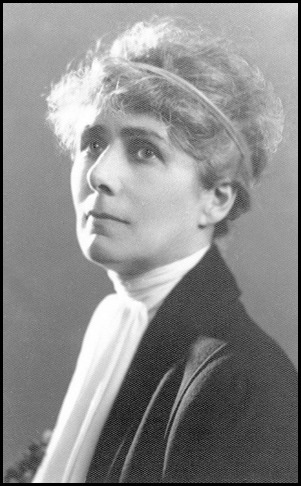Miss Pink

|
Olive Muriel Pink – Always
known as Miss Pink
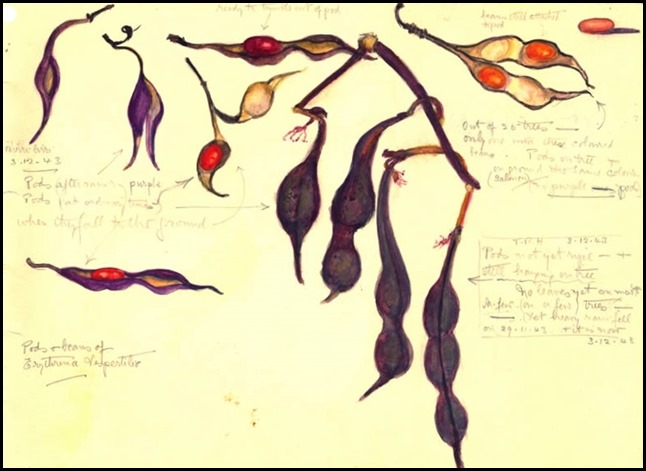 Olive Muriel Pink (1884-1975), artist, Aboriginal-rights activist, anthropologist and
gardener, was born on the 17th of March 1884 in Hobart, elder surviving child of
Robert Stuart Pink (d.1907), warehouseman, and his wife Eveline Fanny Margaret,
née Kerr. Educated at Hobart Girls' High School, Olive studied art at the Hobart
Technical School with the sculptor Benjamin
Sheppard before joining the staff as a teacher in
1909.
Some time after 1910 Miss Pink moved with her mother and brother Eldon - first to Perth, where she gave private art lessons from her studio in St Georges Terrace, and then to Sydney, where she taught briefly in private girls' schools. The students loved her lessons, she said, but headmistresses found her independent spirit a problem. She also attended Julian Ashton's Sydney Art School, studying with Adrian Feint. In May 1915 her drafting skills gained her a position as a tracer in the New South Wales Department of Public Works. That month her 'very dear friend' Captain Harold Southern was killed at Gallipoli.
Employed by the New South Wales Government Railways and Tramways, Miss Pink painted excursion posters and the like until she was retrenched during the Depression. In 1930 she embarked on a sketching tour of Central Australia and investigated the conditions in which Aboriginal people lived. Her interest in Aboriginal welfare had been sparked while visiting Daisy Bates at her camp at Ooldea, South Australia, in 1926-27. These experiences were to shape her life. Encouraged by Professor R. W. Firth to study anthropology at the University of Sydney, she attended his lectures in 1932 and later those of Adolphus Peter Elkin. With Elkin's support, she received grants from the Australian National Research Council to visit the Northern Territory in 1933-36 and work among the eastern Arrernte of Alice Springs and the Warlpiri of the Tanami region. From her Arrernte research emerged two important papers which appeared in Oceania in 1933 and 1936; because her Warlpiri research relied on descriptions of secret rituals, that part of her work was never published. Her decision to lock away her research notes for fifty years infuriated Elkin and the A.N.R.C., and brought her anthropological career to an end. Miss Pink saw anthropology as a means of advancing the cause of Aborigines and aimed to secure land, mining and civil rights for them. She wanted to establish a 'secular sanctuary' for the Warlpiri, an area from which police, government and missions would be excluded in order to allow the Warlpiri to develop their own responses to colonization. Theodore George Henry Strehlow damned her lack of professional qualifications and thus assisted in having her prevented from visiting Aboriginal reserves and missions. In 1938 Miss Pink sought help from the Sheetmetal Workers' Union, Sydney. She provided information to its communist secretary Tom Wright which he used in his booklet, New Deal for the Aborigines (1939). Scrutinised by the Commonwealth Investigation Service and later the Australian Security Intelligence Organization, she was not found to be a threat.
With a small grant from Quaker benefactors and the S.W.U., Miss Pink returned to Alice Springs in 1942 as an independent sociological investigator. To demonstrate the viability of the 'secular sanctuary', she applied for a grazing lease at Papinya in the Tanami region and, while waiting for it, settled at Thompsons Rockhole (Pirdi Pirdi) on the old Tanami Track. There she lived for four years, cared for by Warlpiri families, continuing her research and operating a ration depot funded by a tiny grant from the S.W.U. Her lease was finally granted in 1946, and she moved to Papinya with about thirty Warlpiri people. She began teaching the children English and dancing, introduced some gardening techniques, and described those few weeks as among the happiest ever. Increasing drought and the breakdown of her car brought the utopian venture to an end. Two young Warlpiri men beat her badly when she refused their demands for food. The rapidly worsening situation forced her to return to Alice Springs and the government eventually set up a base for the Warlpiri which became Yuendumu.
Miss Pink lived in a corrugated-iron hut on Gregory Terrace, originally a Sidney Williams hut, built by the army during the Second World War. By this time her small inheritance had been spent on supporting her research and she had very little money. To survive, she sold fruit and flowers from her garden. She later worked as a cleaner in the court-house, where she also monitored cases in which Aboriginal defendants appeared. This arrangement proved uncongenial to magistrates and police alike. Pink formed a committee to obtain land for a museum.
After this plan failed, she set up a small private display of her wildflower paintings and Aboriginal artefacts at one end of her hut. She charged for admission, but friends were not asked to pay and time-wasters were refused entry. The noise from the fire-station next door upset her, and quarrels led to court cases, a charge of assault, the burning of her hut, her eventual eviction, and the loss of her job at the court-house.
Miss Pink was a prolific letter writer.
Miss Pink lived in a tent for some years before she was able to move to a small area of land which, with the help of the minister for territories (Sir) Paul Hasluck, was gazetted as a flora reserve in 1956.
Miss Pink lived in her tent for two years until her hut could be dismantled and moved here, where she worked as honorary curator to establish a haven which is now named the Olive Pink Botanic Garden.
Miss Pink died on the 6th of July 1975 in Alice Springs Hospital and was buried in the local cemetery with the forms of the Society of Friends (Quakers).
Although Miss Pink is remembered mainly for her Edwardian form of dress, her biting tongue and her isolated life on the flora reserve, she had achieved much: she pressed the government on a number of Aboriginal issues, contributed to anthropology by her understanding of Arrernte landownership, and ameliorated life for her Aboriginal friends. She was a passionate advocate for Aboriginal rights. It was her unwillingness to compromise which caused so much trouble to those whom she saw as doing wrong.
ALL IN ALL WHAT A BRAVE WOMAN AMAZING LADY FOR HER TIME |


